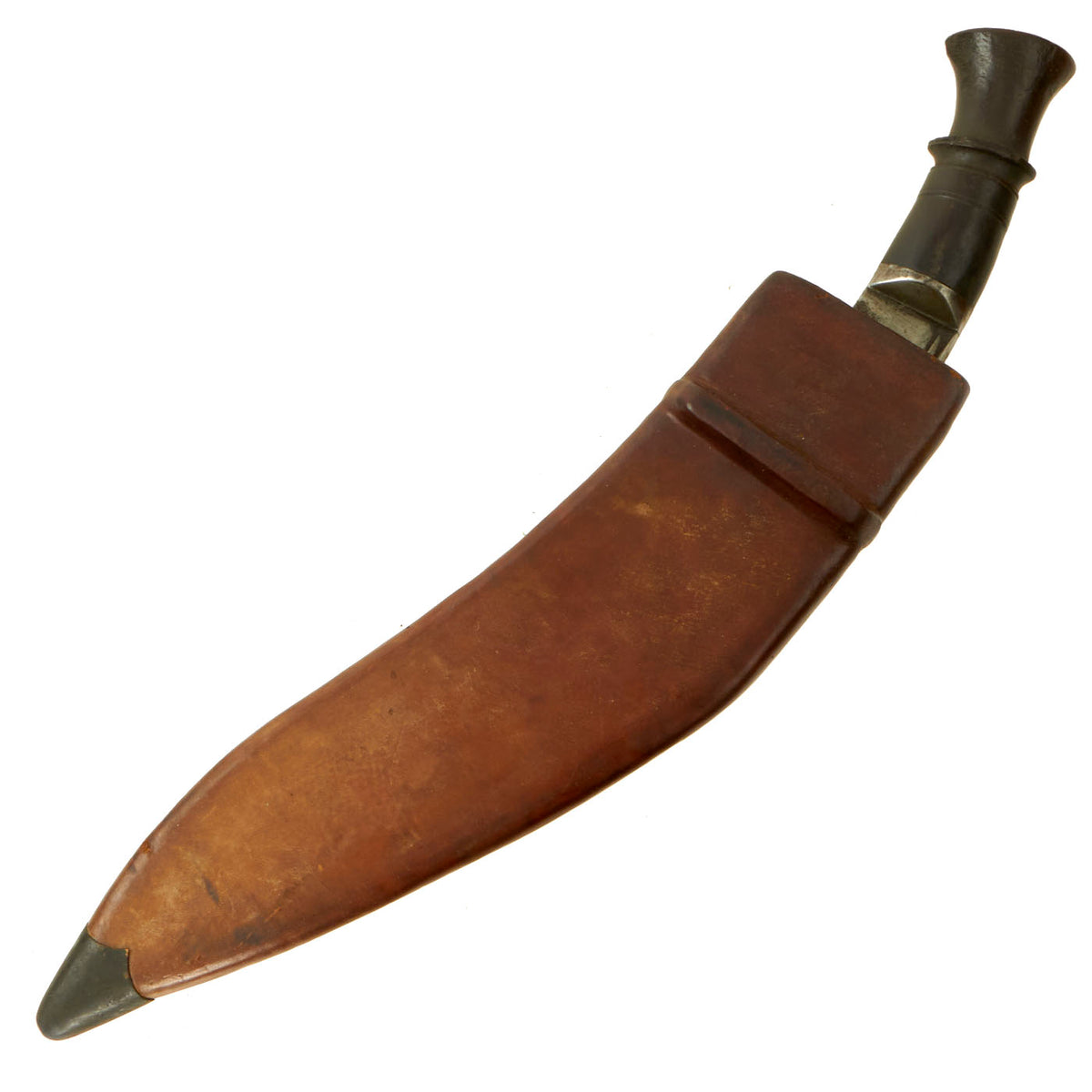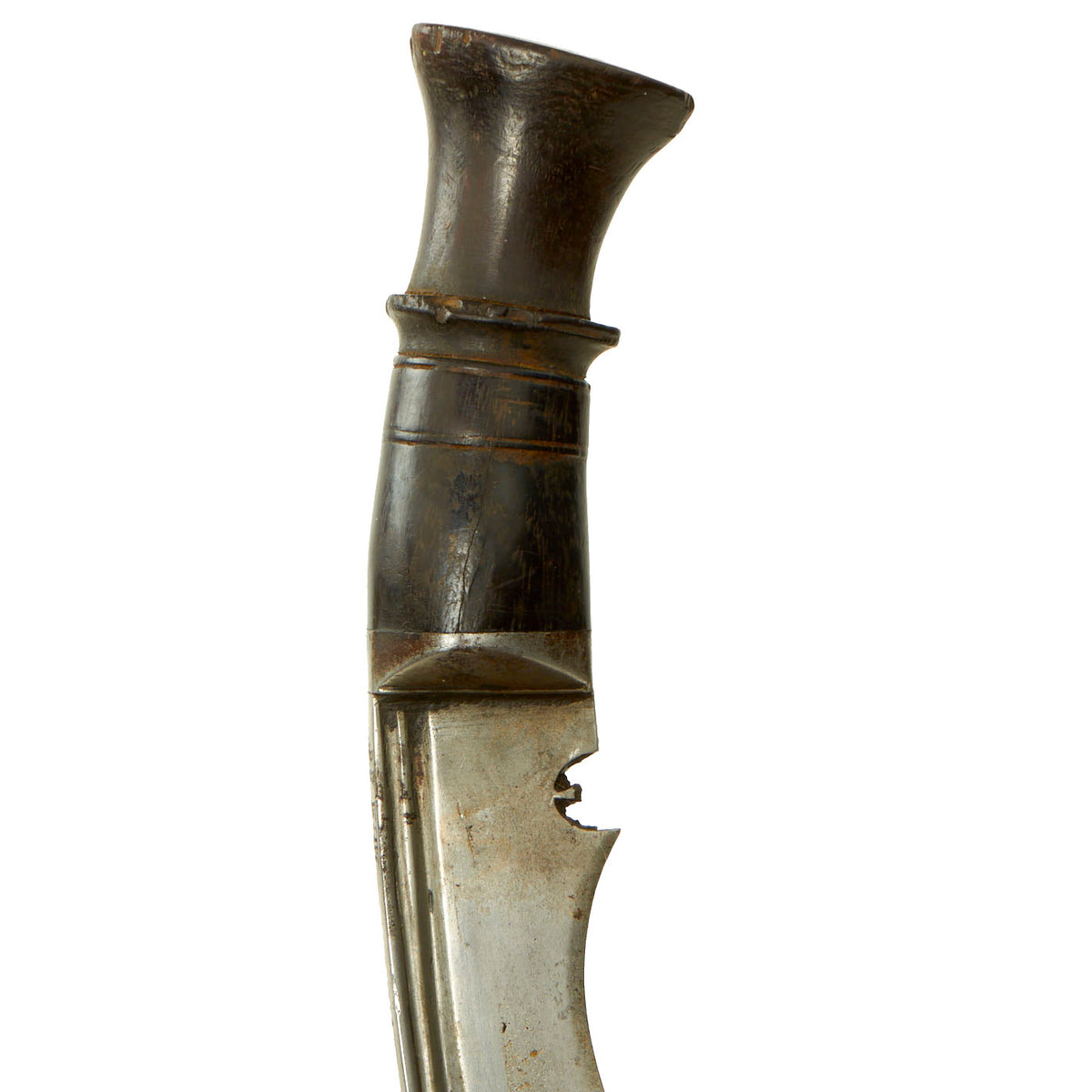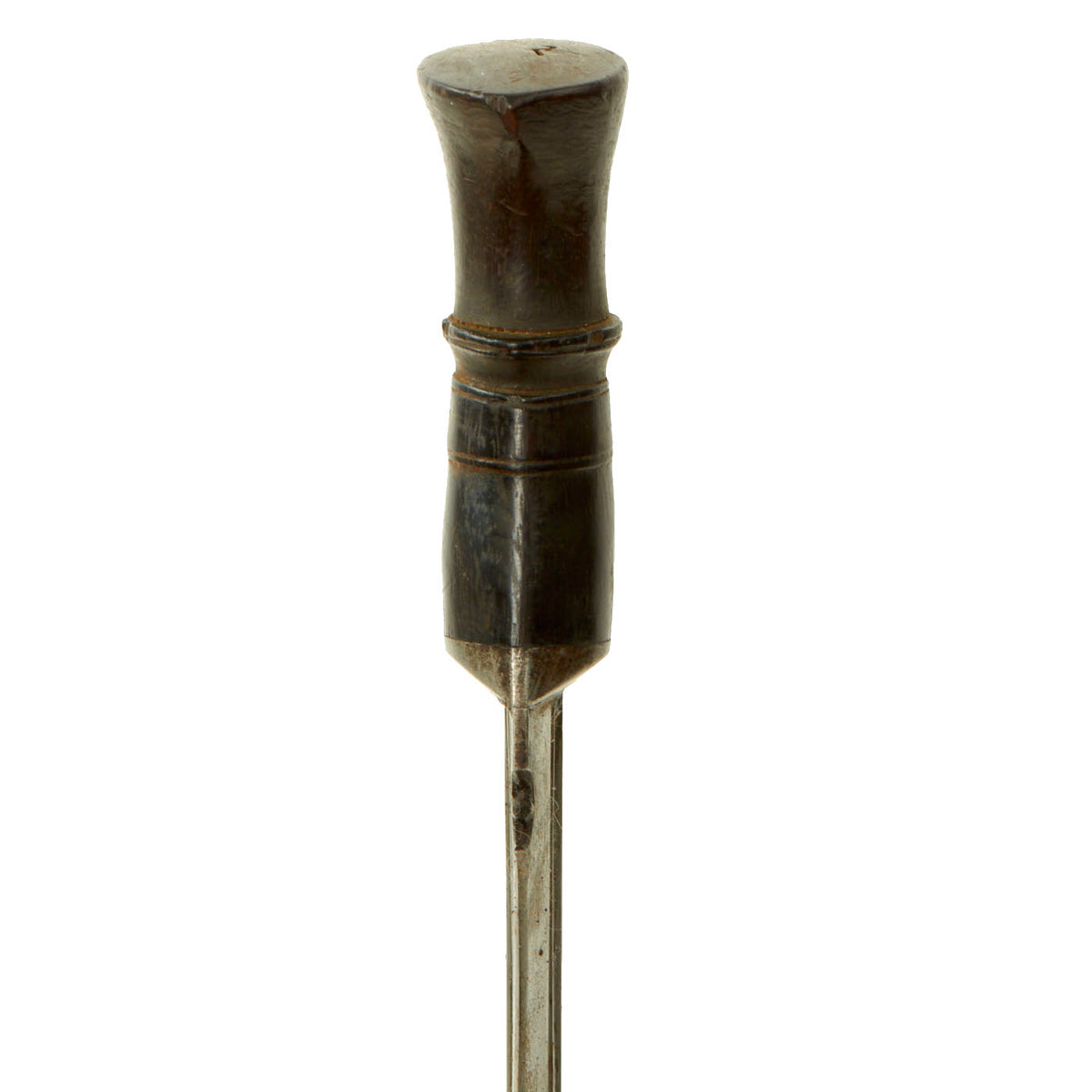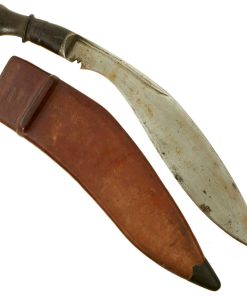Original 19th Century Nepalese Gurkha Kukri Fighting Knife With WWII Canadian Broad Arrow Marked 1945 Leather Over Wood Scabbard Original Items
$ 225,00 $ 90,00
Original Item: Only One Available. The Gurkha Kukri is possibly the most recognizable and famous fighting knife ever developed. Indigenous to the mountain Kingdom of Nepal, home of the Gurkhas who were “absorbed” into the British sphere of influence with the Treaty of Seguli in 1816. These ferocious fighters were infamous for their valor and for using the kukri, an amazing “Tool of Death”. It is a forward leaning leaf shaped blade, which provides the user with leveraged striking power. The kukri became an everyday tool as much as it was a deadly weapon. Introduced long before the British arrived in the early 19th century, the Kukri became standard equipment for Gurkha Regiments serving in the British Army. Ironically the earliest Kukris are the largest, which seems improbable as improvements in nutrition and health care has resulted in mankind in general being much larger today than in 1800, yet with Kukris it is the exact reverse.
This example is in lovely condition and is nicely marked on the spine of the blade. There are no British or Commonwealth markings that we can find, but that does not mean it wasn’t utilized by a soldier during WWII. The kukri comes paired with a lovely, original leather over would scabbard that is Canadian Broad Arrow marked on the front with a 1945 date. The condition of both items are lovely with a slight worn appearance but is offered without any extensive damage.
Comes more than ready for display.
Specifications:
Blade Length: 12 1/2″
Blade Style: Forward Curved Kukri
Overall length: 16 5/8“
Scabbard: 13″
History of the Kukri-
The kukri (alternatively spelled khukri or khukuri) is a Nepalese knife with an inwardly curved edge, used as both a tool and as a weapon.
The kukri was, and in many cases still is, the basic and traditional utility knife of the Nepalese people. It is a symbolic weapon of the Nepalese Army, and of all Gurkha regiments throughout the world. It is a part of the regimental weaponry and heraldry of the Royal Gurkha Rifles, and is used in many traditional rituals among different ethnic groups of Nepal, including one where the groom wears one during the wedding ceremony. It is known to many people as simply the “Gurkha blade” or “Gurkha knife”.
The pronunciation “kukri” is of Western origin, as the Nepalese people to whom this weapon belongs pronounce it with three syllables – “khukuri.”
The oldest known kukris are in the National Museum in Kathmandu, Nepal that belonged to Drabya Shah, circa 1559. The kukri came to be known to the Western world when the East India Company came into conflict with the growing Gurkha Empire, culminating in the Gurkha War of 1814-1816. It gained literary attention in the 1897 novel Dracula by Irish author Bram Stoker. Despite the popular image of Dracula having a stake driven through his heart at the conclusion of a climactic battle between Dracula’s bodyguards and the heroes, Mina’s narrative describes his throat being sliced through by Jonathan Harker’s kukri and his heart pierced by Quincey Morris’ Bowie knife.
All Gurkha troops are issued with a kukri; in modern times members of the Brigade of Gurkhas receive training in its use. The kukri gained fame in the Gurkha War for its effectiveness. Its continued use through both World War I and World War II enhanced its reputation among both Allied troops and enemy forces. Its acclaim was demonstrated in North Africa by one unit’s situation report. It reads: “Enemy losses: ten killed, ours nil. Ammunition expenditure nil.” Elsewhere during the Second World War, the kukri was purchased and used by other British, Commonwealth and US troops training in India, including the Chindits and Merrill’s Marauders. The notion of the Gurkha with his kukri carried on through to the Falklands War.
On September 2, 2010, Bishnu Shrestha, a retired Indian Army Gorkha soldier, alone and armed only with a kukri, defeated 40 bandits who attacked a passenger train he was on in India. He killed three of the bandits, wounded eight more and forced the rest of the band to flee.
Fast Shipping with Professional Packaging
Thanks to our longstanding association with UPS FedEx DHL, and other major international carriers, we are able to provide a range of shipping options. Our warehouse staff is expertly trained and will wrap your products according to our exact and precise specifications. Prior to shipping, your goods will be thoroughly examined and securely secured. We ship to thousands clients each day across multiple countries. This shows how we're dedicated to be the largest retailer on the internet. Warehouses and distribution centres can be located throughout Europe as well as the USA.
Note: Orders with more than one item will be assigned a processing date depending on the item.
Before shipping before shipping, we'll conduct a thorough inspection of the items you have ordered. Today, the majority of orders will be delivered within 48 hours. The delivery time will be between 3-7 days.
Returns
The stock is dynamic and we cannot completely manage it because multiple stakeholders are involved, including our factory and warehouse. So the actual stock may alter at any time. It's possible that you may not receive your order once the order has been made.
Our policy is valid for a period of 30 days. If you don't receive the product within 30 days, we are not able to issue a refund or an exchange.
You can only return an item if it is unused and in the same state as the day you received it. You must have the item in its original packaging.
Related products
Uncategorized
Band of Brothers ORIGINAL GERMAN WWII Le. F.H. 18 10.5cm ARTILLERY PIECE Original Items
Uncategorized
Uncategorized
Uncategorized
Uncategorized
Armoured Fighting Vehicles of the World: AFVs of World War One (Hardcover Book) New Made Items
Uncategorized
Armored Burgonet Helmet & Polearm from Scottish Castle Leith Hall Circa 1700 Original Items
Uncategorized
Uncategorized
Uncategorized
Uncategorized
Angolan Rebel 1970s era 60mm Inert Display Mortar from Angolan Civil War Original Items
Uncategorized
Uncategorized
Uncategorized
Uncategorized
Uncategorized
Uncategorized
Uncategorized
Uncategorized
Australian WWII Owen MK1 Machine Carbine SMG Custom Fabricated Replica with Sling Original Items












































































